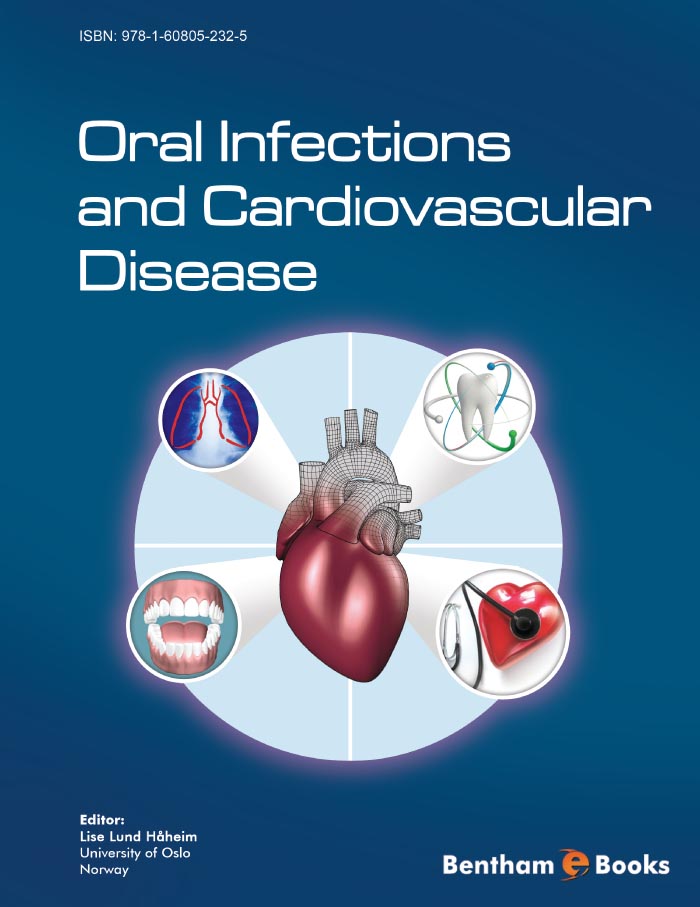Is there sufficient evidence to conclude that chronic periodontal infections and dental infections are associated with cardiovascular diseases or are even important factors in the causal chain that leads to atherosclerosis, myocardial infarction, aneurysms, stroke or heart valve disease? Are they involved in the progression or even the initiation of the diseases making up the entity of cardiovascular diseases (CVD)?
This book aims to give a broad overview of current knowledge about the research in the field of oral infections and their association with cardiovascular diseases. Chronic periodontal and dental infections in many respects share the same bacterial profile and together increase the infectious burden of any individual. The chronic course, with often low-grade exposure in the circulation to the infections, causes a long-term exposure that contributes to systemic inflammation, endothelial dysfunction, development of atherosclerotic lesions, thromboses and emboli, to atherosclerotic plaque rupture, and invasion of the cardiovascular tissues.
The authors were invited to present their knowledge in the light of their particular research field. They were asked to focus on the range of the different aspects needed. Many epidemiological, clinical and other scientific aspects are covered. For Chapter 1, Mattila was invited to write about the early story from the first presentation of the infection hypothesis for an infectious aetiology of coronary heart disease, together with the later animal studies and early case–control studies up to publication of the breakthrough study that he and his colleagues did in 1989. Causality is discussed in the context of philosophy, epidemiology, statistics and evidence-based medicine in Chapter 2. Criteria of causality when investigating association, and cause and effect are presented, and the final chapter links the current evidence of whether oral infections cause cardiovascular diseases, in view of the different study designs which give evidence that has different strength and biases.
In Chapters 3 and 4, Enersen and Thelle write about the current status of periodontal disease and cardiovascular disease (CVD), respectively. This is important knowledge for basic under-standing of the relationship between the two distinct diseases. Advanced methods have been used in this research to provide, examine and establish evidence of relevant factors linking oral bacteria to the bacteria or bacterial products in cardiovascular tissues or blood; in Chapter 5 Kristoffersen gives a detailed update on genetics and bacterial identification.
The laboratory methods presented by Kristoffersen (Chapter 7) have helped Olsen and other researchers to map the bacteria involved and their presence in diseased CVD tissues (Chapter 5). Kerrigan and Cox describe the serious consequences of oral bacteria on the platelets in the circulation in Chapter 6. Intervention studies are important for assessing the effect of treatment of chronic periodontal disease in the prevention of CVD. Chapter 8 gives an overview of the recommended treatment and prevention of periodontitis, which is important to both prevent oral infections and improve oral health and to reduce the risk of CVD.
In view of the theory of science and philosophy, Hofmann discusses, in Chapter 9, how to relate to new risk factors being brought into an established research field such as CVD. He presents the notion of necessary and sufficient causes for a disease, and includes the risk of the evidence not being sufficiently strong to draw conclusions. The final chapter brings together the main evidence.
As the editor, I am indebted to the international panel of my distinguished co-authors who have so willingly shared their wealth of knowledge to give the readers an insight into the study of the causality of CVD, in view of the role played by chronic periodontal disease and dental infections. The detailed accounts in which they outline the major issues in their and their colleagues’ research are of great value to readers in the scientific community, practitioners, teachers and students in relevant fields, and health-care planners. The framework of this E-book puts the scientific evidence of these different topics into a comprehensive perspective.
Lise L. Håheim
University of Oslo, Oslo, Norway

